The days of the Auxiliary Fire Service and the National Fire Service
In January 1941 the Brigade decided that application should be made to Shipston on Stour District Council with a view to the Brigade being taken over by the Council as a branch of the Auxiliary Fire Service.
On 24 February 1941, the Secretary received a letter from the Council confirming the Brigade’s new status. From that date, therefore, the Tysoe Fire Brigade became a branch of the A.F.S. under the control and auspices of the Shipston on Stour District Council.
At the same time the Council informed the Brigade that there was no desire to purchase or assume responsibility for any of Tysoe Fire Brigade’s existing equipment, but that the supply of new and updated equipment would be a matter of priority. Mr Sale, Chief Officer of Shipston Brigade, came to Tysoe and took over the existing equipment, promising to put in an application for a new hose and two branches ‘which were badly needed’.
He also promised that he would try to speed up the supply of other items of equipment, and in due course the members were fitted out with steel helmets, service gas masks, and anti-gas clothing.
Rubber boots and uniforms were not yet available at this time.
The Brigade started a scheme whereby one of its members should be on duty each night of the week at the Fire Station as a precaution due to the frequent air raids of the period, and a bunk was placed in the station for his comfort. The extra expense of heating and lighting at the Station would be borne by the Tysoe Brigade funds.
On 22 April the Secretary received a letter from the Council advising that they were prepared to purchase 2 x 75ft lengths of hose and 2 branches for use by Tysoe Brigade, but delivery could not be guaranteed in less than 22 weeks.
On 10 June, the Secretary wrote to the owner of the Station (Lord Northampton) advising that the thatched roof was badly in need of repair and asking His Lordship if he would look into the matter.
As a result of this letter the Secretary met Lord Northampton on 17 June. His Lordship expressed the opinion that he thought the Fire Station had been given by him to the Parish Council in the year 1920. His Lordship therefore considered it the duty of the Shipston on Stour District Council to look after the maintenance of the building.
The Secretary informed him that, according to the Clerk, no notification of any such transaction was recorded in the records of the Parish Council. During November of that year, the Secretary arranged another interview with Lord Northampton, who said that he had received word from the Shipston on Stour District Council to the effect that, subject to the building being passed as suitable by the N.F.S. authorities at Leamington, the Council was prepared to take it over.
The Secretary was authorised to attempt to arrange for a thatcher to undertake the necessary repairs to the roof.
On 20 July 1941, a Trailer Pump was loaned to the Brigade for the prevention of fire among crops etc. Mr Sale came to Tysoe with Mr Abrahams to give instruction as to ‘the working of the pump’. After about three months the Trailer Pump was taken back to Leamington Spa, so the members of the Brigade decided to discontinue nightly duty at the Fire Station until they were provided with another pump as promised. The Trailer Pump was later returned to Tysoe.
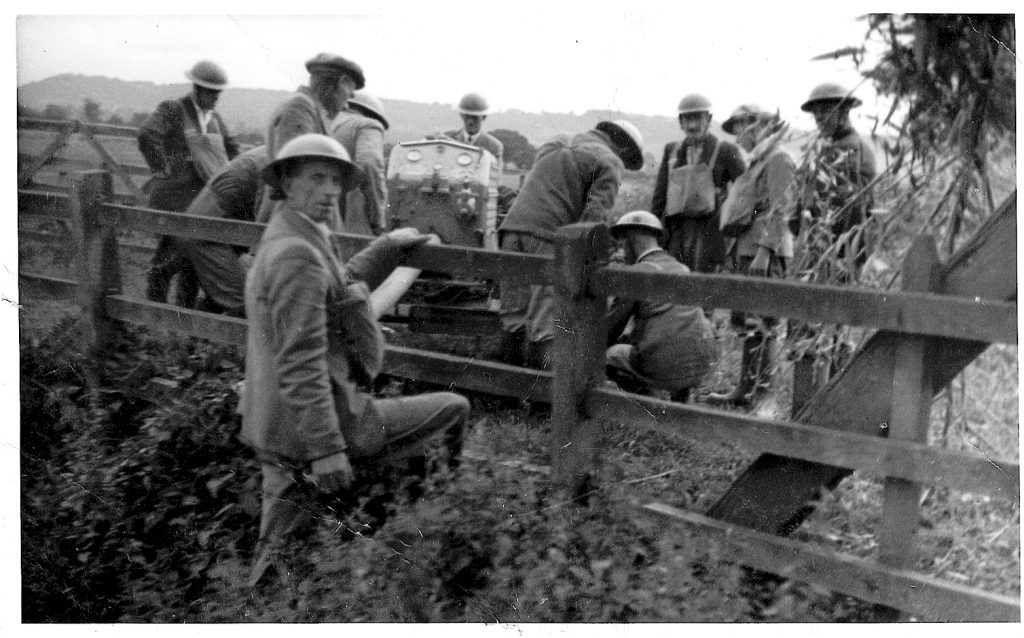
Drill, for the A.F.S. firemen, was scheduled to take place each Sunday morning from 9am to 12noon.
Mr B Bloxham would tow the Coventry Climax Trailer Pump with his coal lorry. A kind benefactor from Farnborough gave the Station an old shooting brake car. If the coal lorry was not available, this shooting brake was used to tow the Coventry Climax Trailer Pump.
At the same time six pairs of wellington boots were issued to the Brigade, these being the only suitable issue available at the time.
The old Manual Engine was sold to Mr J Philpot, the last Captain of the old Tysoe and Compton Wynyates Volunteer Fire Brigade, for £3-2-6d. He removed the top and the pump, leaving only the bed to be used as a horse trailer on his farm.
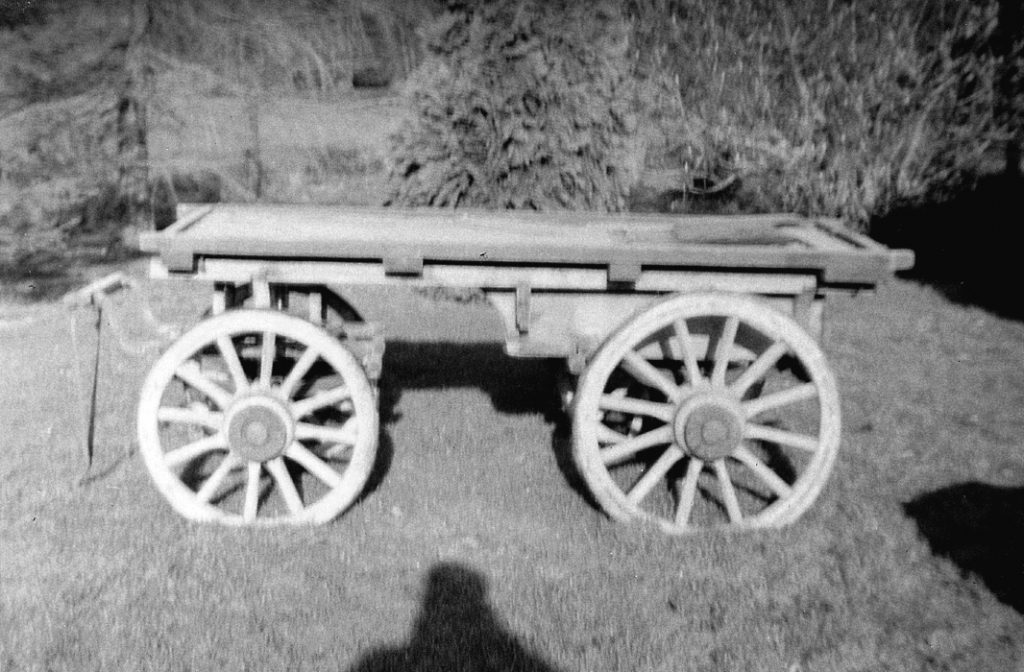
An A.R.P. lamp was obtained for the Service.
A dance was held, which raised £9-15-0d for the funds.
Early in May a meeting was held in Middle Tysoe, at which Mr Cooper (District Surveyer), Mr Sale (Chief Officer at Shipston), Mr J Philpot (Chief Officer at Tysoe), Mr F Hancox (Secretary of Tysoe Parish Council) and several members of the Parish Council inspected the brook, with a view to making a dam for the storage of water for fire fighting, as the old stank by the church had proved very unsatisfactory.
They decided that a dam to hold some 5000 gallons of water was to be put in the brook at the back of the house at the junction of Main Street and Peacock Lane.
Blackfords Pool in Temple (Lower) Tysoe, the new pool in Church (Middle) Tysoe and Hollands Pool in Upper Tysoe were all sunk and cleaned out by 2ft to hold as much water as possible.
Two buckets of sand had been delivered to most of the houses in Church Tysoe and Upper Tysoe, but none had yet been delivered to Lower Tysoe. As more sand was required about the village, Mr Lomas felt that sand could be obtained free if Lord Northampton was approached. This was duly done, and the free sand from the Compton Estate was tipped in various parts of the village. Mr Walton offered to fetch two or three cartloads for Lower Tysoe.
A bucket of water and two buckets of sand were to be kept at each home to help deal with the effects of incendiary bombs and small Fires.
Notices were displayed in the village asking for volunteers to act as Fire Watchers in the event of air raids.
Mr Quinton, Senior Chief Warden of the Civil Defence Service, advised that the A.R.P. Wardens had been entrusted to form an organisation of Fire Watchers. The following is a list of the individuals involved and the areas covered by them:
In Upper Tysoe, Shipston Road was to be covered by Mr G T Gardner, Smarts Lane by Mr J Philpot, Epwell Road by Mr C Greenway, The Tchure and Corner by Mrs Church and Mrs O’Connor, Baldwins Lane and Old Tree Lane by Mr R Parker, Old Tree Lane to the clap gate by Mr G Freeman and Mr H Darlow.
In Middle Tysoe, Avon Avenue by Mr W Billing, the nearby cottages by Mr C Reason, Main Street by Mr F Heritage, The Vicarage and Vicarage View by Rev. Jones, Peacock Lane and Lower End by Mr A Calvert, Saddledon Street by Mr E E Farbrother, Back Lane by Mr C Canning, The Green and the houses further up by Mr D Heritage. Messrs T Mulholland and J Matthews also volunteered their services.
In Lower Tysoe, Mr J Walton was the only representative and he would be responsible for Fountain Lane, now Lane End. He would try to get someone to act for Pudding Bag Lane, now Badgers Lane, and for Church Tysoe Road.
The Fire Watchers were to work in groups, each group to appoint its own leader, one person to be appointed chief of all the groups. The Rev Jones was appointed as Chief Fire Watcher. All this was in place by 10 February 1941.
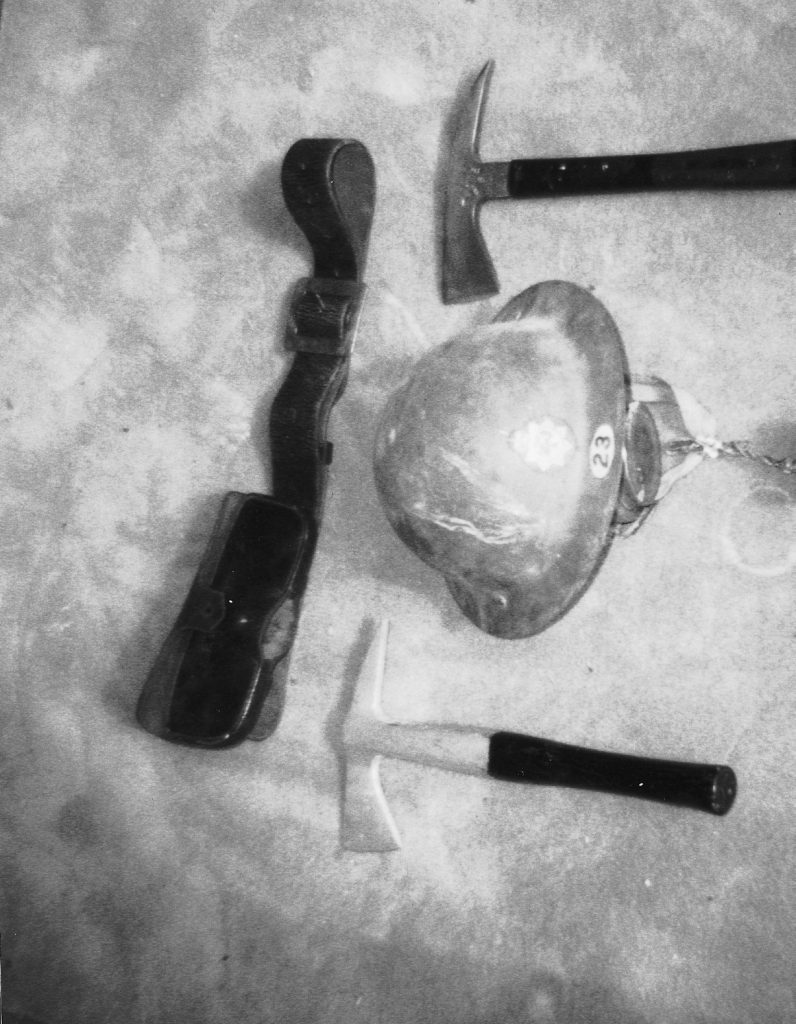
18 August 1941
The National Fire Service
The Station was taken over by the N.F.S. and was to be in Fire Forces Region No. 23, which covered the southern half of Warwickshire and was centred at Worcester. North Warwickshire was in Region 24.
The Brigade was now equipped with a more modern appliance, a Canadian Ford Towing Vehicle, registration number GXN 9, and one light Trailer Pump.
The Captain, Mr J Philpot, was to stand down as leader and Mr F Heritage was made Leading Fireman in charge of the Station and four firemen were on duty at the Station each night from 22.00 until 07.00. Three more bunks were put into the station, and the Brigade at that time comprised three crews, with each man on duty every third night.
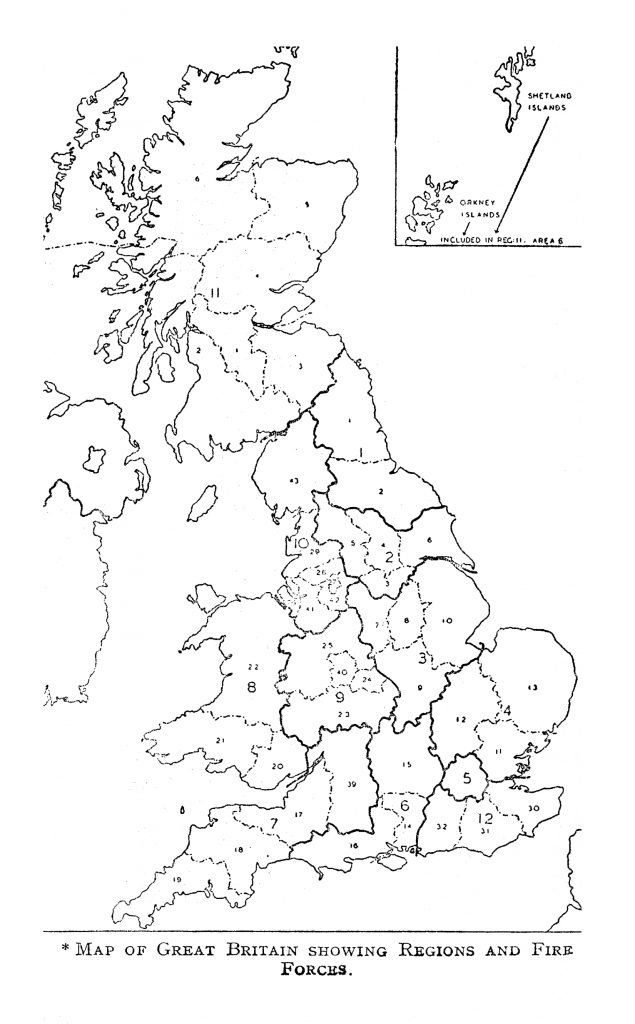



The Firemen were called out via the telephone in the Station during the night, and in the daytime the duty officer went round to all the crew in the village to call them from home or work to come to the Station.
There was a large fire in a thatched house next to the shop, now Central Stores. This was one of the first fires to be fought using the new Towing Van and Pump, and the water was pumped from the new pool. When the firemen entered the house, they found a large wooden box at the top of the stairs. Two men carried the box downstairs and outside, and found it to be full of gold sovereigns. The box was removed speedily by the owners. In the house was also found a large stockpile of food rations. The Brigade was also called, together with a pump from Stratford, to attend a large hay rick fire on the Stratford Road near the Loxley turn.
A dance was held in the village hall which raised £9-15-0d for the funds. Fines were imposed of £0-5-0d for a chimney fire, and £5-15-0d for a bonfire during blackout.
A new aerodrome, R.A.F. Edgehill, known locally as Shenington Airfield, had been built at the top of Tysoe Hill, just within Oxfordshire. This was a ‘satellite’ station to R.A.F. Moreton-in-Marsh, and was to be used for the training of bomber aircrews.
Materials for the airfield were brought by road from Moreton-in-Marsh via Tysoe. On one occasion at Tysoe Hill, with its steep climb and several sharp bends, two AEC petrol bowsers were on a delivery to the airfield. The first bowser reached the top of the hill, but the second suffered a breakdown part way up the hill. The driver of the first vehicle reversed down the hill to offer help but on reaching the first bend, went off the road, hitting a tree and ending up in the ditch, where it burst into flames. The Tysoe fire crew had to put out the hedge fire only, since the vehicle had already burned out.
The airfield was mainly for use by Wellington bombers and many incidents occurred involving these aeroplanes. On 24 October, a Wellington stalled at a height of only 400 feet, crashing at Lower Brailes, Warwickshire. The aircraft caught fire and only the rear gunner survived. A Foam Tender from Stratford upon Avon attended this incident in support of the Tysoe crew.
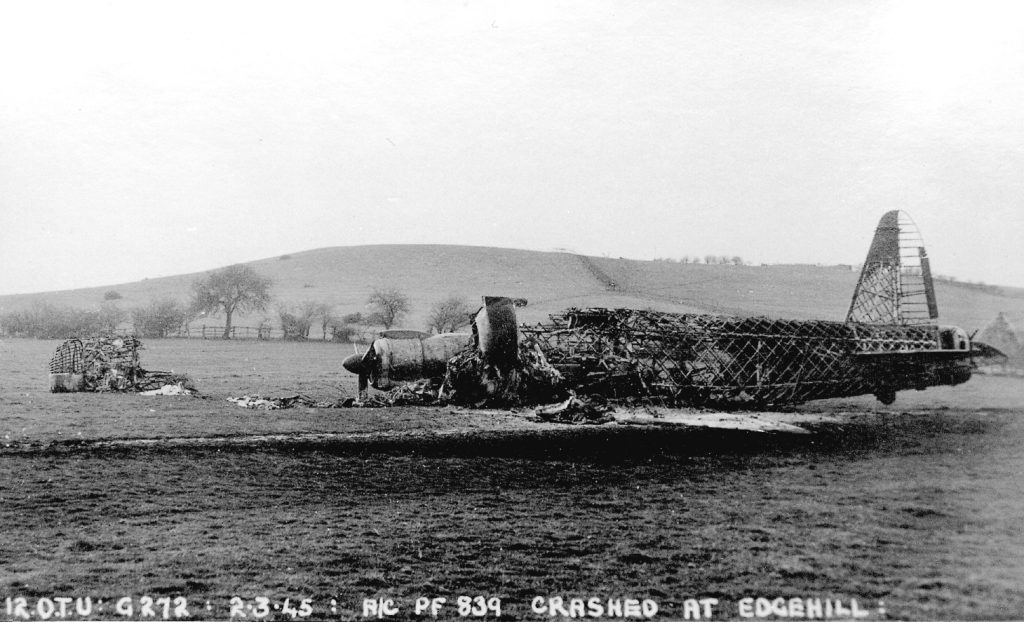
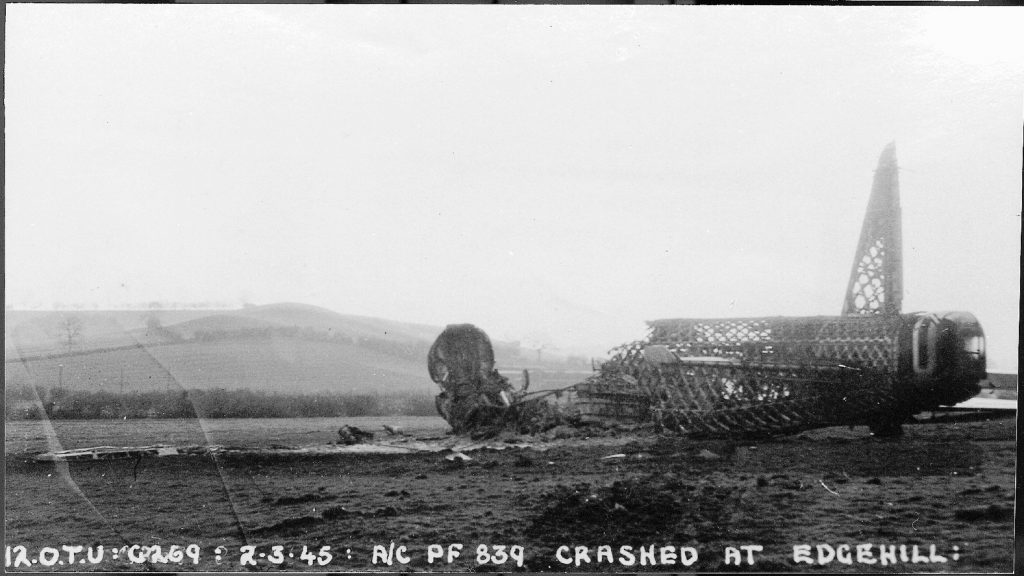
1941 and 1942
There were a further twelve crashes around the Tysoe area involving Wellington bombers from this airfield. On 3 October 1941, near Upton House, Edgehill, a Wellington crashed after hitting a tree in fog. All of the crew were killed.
Further crashes occurred on 21 November, a mile north of the airfield, and on 20 December, near Compton Wynyates.
Several bombers flew into the hills at Lower Tysoe on the approach run to the airfield, and shortly after taking off. The airfield is 625 ft above sea level, and Tysoe is at 350 ft. On take-off the bombers were on the ground, one minute and at 275ft the next, over the hills and the valley. Aeroplanes from other airfields also crashed around this area whilst attempting to land at Shenington Airfield right up to the end of the war. The Tysoe Brigade attended many crashes along with the RAF Fire Tender from the aerodrome.

During February 1942, the top secret Gloster E28/39 experimental jet aircraft arrived at R.A.F. Edgehill. This was Britain’s first jet aircraft, the engine being the brain-child of Sir Frank Whittle.
The early jet aircraft flights were around the Tysoe area, and the villagers thought that, without a propeller, crashes were inevitable. As there was tight security on all test flights, before the jet took off a propeller would be put in one of the fields around the airfield, in order to give the impression that it had fallen off this aircraft. These planes were known by those working on the project as the ‘The Flying Farts’.
On 17 April 1943, a test pilot took off from R.A.F. Edgehill for Hatfield, in Hertfordshire, to demonstrate it to the Prime Minister, Mr Winston Churchill. This was the first cross-county flight by any jet-powered Aeroplane.
Brigade expenditure included the following: Alarm Clock £1-3-0d, Dartboard £0-18-3d, Warship Week £0-5-0d, Telephone calls etc £0-10-0d, Headlight Masks for fitting to Towing Vehicle, to ensure that its lights shone downwards onto the road and were not visible from above £1-7-6d.
Repair to the Towing Vehicle cost £1-8-6d, which included new headlight bulbs at £0-3-0d, cleaning out the petrol tank at £0-5-0d, and charging the batteries at £0-6-0d.
There was a hay rick on fire at Old Lodge Farm, Lower Tysoe on 28 July 1942, when some 12 tons of hay were set on fire by some children. To get to the fire 6 Pumps, a hose laying lorry and 4 mobile dams were required. Fire crews attended from Tysoe, Shipston on Stour, Leamington Spa, Warwick and Stratford, and one half of the rick was cut off by hand, using a hay knife, and was spread out (see Fire Report below).
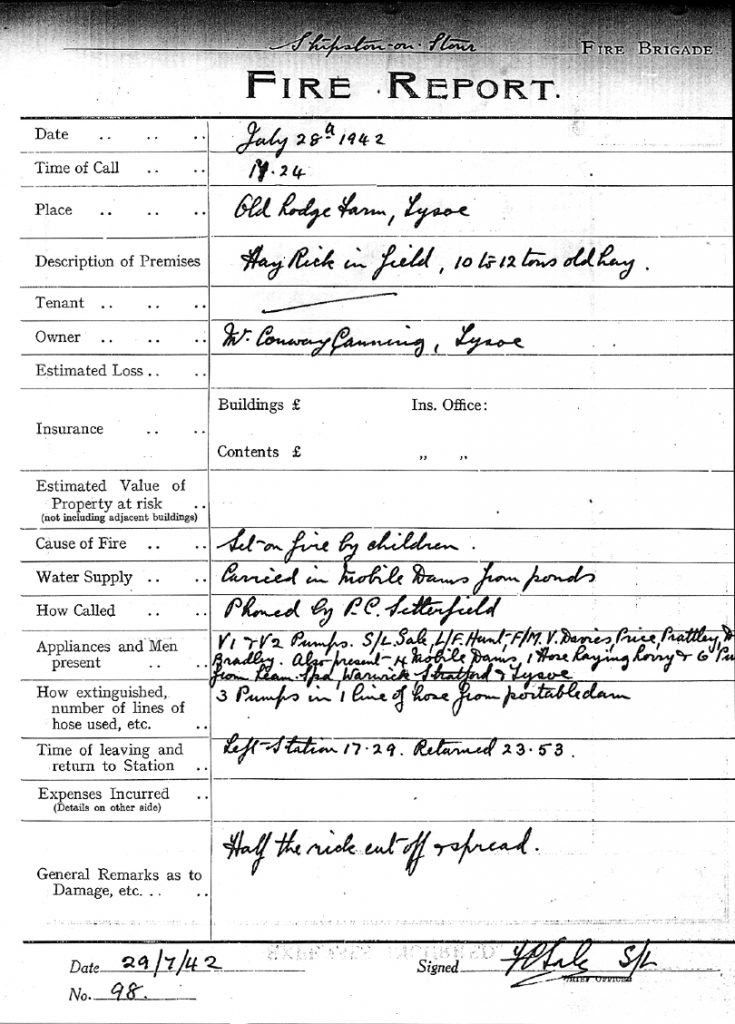
1943
The following items of expenditure were recorded:
New window for the rear of the station £1-4-7d.
Chimney cowl for the stove by the thatched roof and a new head for the stove £0-7-6d; one flash lamp £0-4-0d .
Installation of electric lighting into the Station, including all fittings and bulbs £1-0-0d. (Oil lamps to be used no more under the thatch).
Repairs to the Towing Vehicle included adjustment to the carburettor £0-4-0d, new twelve-volt battery and lead £6-7-6d, one gallon of engine oil £0-6-8d, oil and grease £0-2-6d, one vehicle jack £0-12-0d, one engine pump £1-2-6d, rubber mud flaps £0-9-0d, and a puncture repair at £0-2-0d,
A fund-raising dance produced £14-6-6d.
Firemen A Calvert and P Hibberd had joined H.M. Forces and their clothes kit was to be transferred to the new fireman, Mr C Kitchen subject to fit.
The clothing card was to be issued from Sub Division.
A gift of 100 cigarettes was presented to Mr P Hibberd at a cost of £0-11-9d, on his leaving the Brigade.
The younger men, Fireman A Gibbs and Fireman C Hoggins were to be messengers on the fireground and at the Station.
The Brigade was called to attend a huge fire in Olton, Acocks Green, Birmingham, at an open storage depot for thousands of tyres. Attendance was also necessary at various incendiary bombs around the area.
Another call at this time was to central Birmingham to attend a huge fire in a Rest Home for the disadvantaged. There was also a small fire at the Methodist Chapel in Tysoe, which was extinguished by the son of the village policeman and others, using a stirrup pump.
1944
A dance, held in the village hall, improved the finances by the sum of £11-10-8d. Subscriptions were still coming in from Miss Castle at £1-0-0d, and expenditure during the year was listed as £1-0-0d to the Boys Fund, £1-0-0d to The British Legion, call bells installed in the firemen’s houses cost £7-5-0d, and to supply and fit a new fan belt cost £0-5-0d. A new headlight bulb cost £0-3-0d, and a drill book was purchased for £0-6-0d.
A new oak post with iron bands for the entrance gates cost the Brigade £1-4-0d, and a new partition to form an office at the rear of the station cost £3-9-0d. To repair a puncture in the Ford Towing Vehicle cost £0-5-0d and another in the Bedford shooting-brake £0-2-0d. The cost of the electricity for lighting the station for 40 weeks at £0-1-6d per week was £3-0-0d.
The year ended with a balance in hand of £10-3-0d.
The Brigade was called to a fire at Cherington Hill Farm, Cherington. This was on a steep bank on top of the hill, and a Water Carrier, called in to help, became stuck halfway up the hill, with the result that the fire had to be extinguished using hand tools and with help from the N.F.S. crews from both Shipston on Stour and Cherington.

Front row, C Hoggins, T Parker, Leading Fireman F Heritage, Station Officer Guell, B King, J Philpot
1945
When the war was over, and all hostilities had ceased, the firemen cancelled the night duty at the Station.
The Brigade was to be called out to attend fires by the sounding of the all-clear note on the air raid siren, accompanied by the sounding of the call bells in the homes of the men.
The firemen were now to be paid as Retained Firemen with a retaining fee of £12-0-0d a year and an additional £0-5-0d paid to each man as a ‘turn out’ fee.
The balance of the Brigade at the end of 1945 was £10-3-0d.
1946
Most calls were to attend numerous rick fires, generally caused by the spontaneous combustion of damp, heated hay.
1947
Following the end of the war, the Government prepared a Bill to transfer Fire Services to local authority control. This received the Royal Assent on 31 July and became the Fire Services Act of 1947.
The Act transferred the operation of the National Fire Service to local authorities and with it the responsibility of providing an efficient service within the relevant local authority area. The Tysoe Brigade was thus under the Warwickshire County Council, the Council also being responsible for setting the standard time of 20 minutes for attendance at fires (arriving at the scene etc.) for D risk areas such as the south of Warwickshire. (Standard of Fire Cover).
The date for the Act to take full effect was set for 1 April 1948.
During the year Tysoe Station won the Proficiency Test for the best kept station in N.F.S. area 23.
